Alan Chadwick at Blue Lake
In 2017 a visit was made to the site of Chadwick's 1970 encampment at Blue Lake, California.

Warm sun, clear water, and lush vegetation along the shoreline of Blue Lake
Alan Chadwick Takes a Desperately-Needed Vacation to the Sierra Nevada
Upon starting a garden at U.C. Santa Cruz in the spring of 1967, Alan Chadwick amazed all observers by working dawn to dusk nearly every day for six months in clearing tangled brush and poison oak from a steep hillside and laboriously cultivating the four-acre site by hand. The work was back-breaking and unremitting, but he was determined to demonstrate how a classical garden could be created almost anywhere using his distinctive philosophical and ecological method of gardening. Over the subsequent three years of rigorous daily management and ambitious improvements, the grand endeavor evolved into the most exceptional horticultural triumph that anyone had ever seen. Chadwick even divided his meager salary with four advanced apprentices so that work could proceed all the more productively. But by the summer of 1970 Alan was understandably exhausted. While it was clear he needed to take a break from the garden, at the same time it did not seem feasible for him to get away. He had put everything he owned into the project, impoverishing himself in the process. But Jasper Rose, an Art History professor at UCSC, came forward offering to lend Alan sufficient funds to pay for a six-week camping trip in the Sierra Nevada. At first Chadwick was reluctant to accept, but the situation had come to a point where, either he found a way to rejuvenate himself and renew his commitment, or else he might need to abandon his work on the project altogether. Everyone needs time off. Being completely worn down, he relented and accepted the loan.
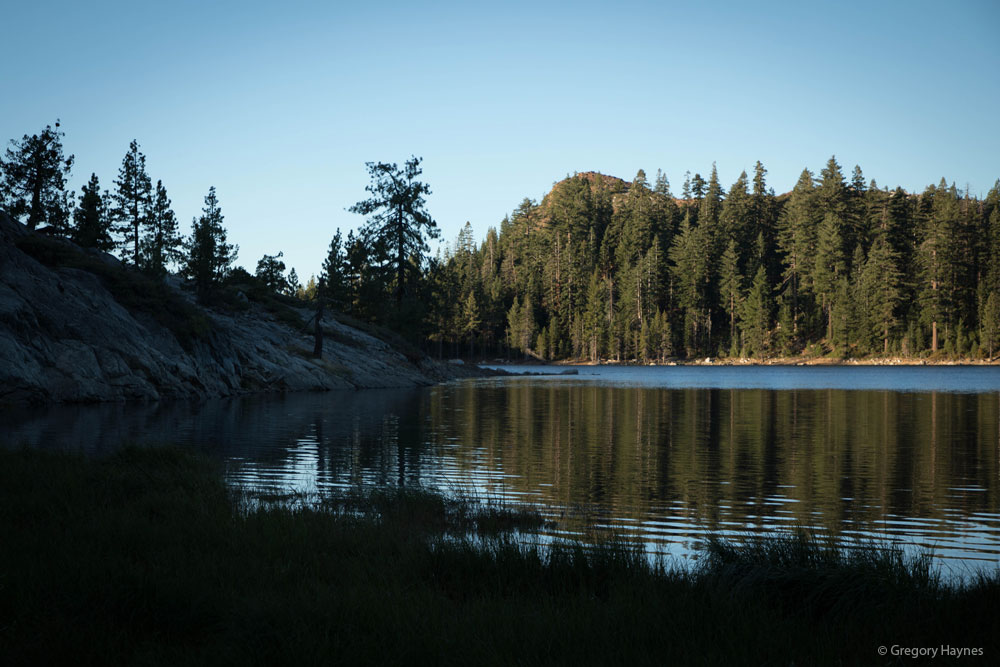
The shores of Blue Lake, in the Tahoe National Forrest, with Zion Hill in the distance. The view from Zion Hill (elev. 6204) is magnificent, although the biting-cold, gale-force winds blowing on this late September day in 2017 shortened the visit to the summit. Fortunately, the air was calm near the lake itself, although patches of snow still lingered on shady, north-facing slopes.
In hope of making the vacation a more appealing and companionable experience, a recruit from the garden’s workforce was sought to accompany Alan. Finding the right person was not easy, since Alan's personality was known to be incredibly intense in both work and play, with an explosive temper from time to time as well. Whoever undertook the task would have to be able to maintain their equanimity during those difficult episodes that were sure to arise now and again. Fortunately, one of the apprentices at the time was a young man who had recently become involved with a spiritual movement based in India. The practice of striving for calmness and equanimity in the face of challenging circumstances was a principle tenet of the group, and its members even sought out opportunities to test themselves under such circumstances. Encouraged by the other apprentices, Will David agreed to undertake the task.

The campsite on the north side of Blue Lake.
Now Alan was quite accustomed to camping. During his days with a traveling theater group in South Africa, the cast members would regularly perform in many small towns scattered throughout the rural countryside. Because life with such performers would often sink into various vices and debauchery during off-hours, Alan would typically seek out ways to separate himself from the rest of the cast whenever he could. The best way to do that, he discovered, was to pitch his tent in the wilderness that was always not far from the hotel where the rest of the troupe was ensconced. He used to describe his encounters with lions and other wild animals that would often investigate his encampment in the bush. He was never attacked or threatened during the entire time that he spent touring in South Africa, he claimed. Even the deadly Black Mambas, venomous serpents that, as Alan amusingly described it, were known to sometimes find their way into the sewer systems of African towns, where they would actually come up through the pipes into the toilets of the houses and bite unsuspecting middle-aged European matrons on the bum --even these dreadful snakes never entered his tent, though he would regularly observe them slithering around just outside his canvas doorway.

A late afternoon reflection on the surface of Blue Lake.
But although Alan Chadwick was an avid camper, still he did not like to leave behind all of the accoutrements of civilization during his forays into the wilderness. He and Will David made multiple trips from the car to the remote campsite with ice-chests, a king-sized blow up mattress, a full-length mirror (Alan was invariably fastidious about his appearance), a dresser for his clothes, and many other conveniences that he considered indispensable. When others of the apprentices came out to visit from time to time during this six-week period, they would marvel at the level of comfort that Chadwick was able to maintain despite the remoteness of the spot. Dinners, for example, were culinary masterpieces with multiple courses and elaborate deserts. Everything that Alan did, he did with flair and panache.
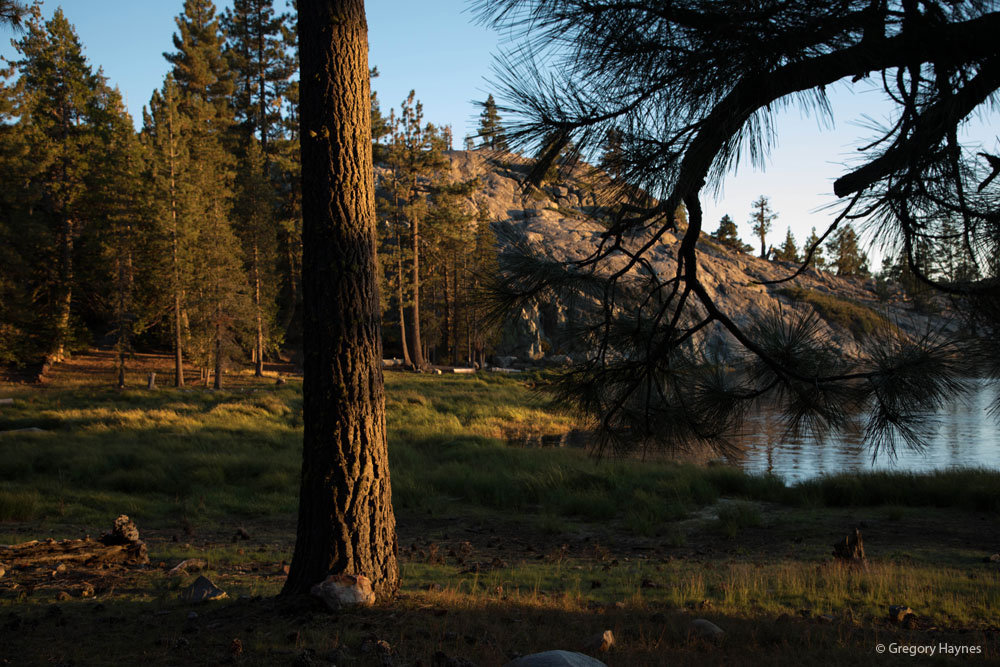
Camp was located under the pines up against the rock outcropping in the distance.
When the present writer joined the UCSC garden project in the early days of 1971, people were still talking about the camping trip to Blue Lake, and how Will David had survived six weeks with Alan in the great outdoors of the Sierra wilderness. Will had become something of a folk-hero amongst the apprentices for his role in this episode. Although I met him in the garden a few times in 1971, by that time he had moved on to other pursuits, only coming back to visit every once in a while. Those who had been around longer would point him out to me in semi-reverential awe, whispering that he had done what no one else would attempt. This all made quite an impression on me at the time.
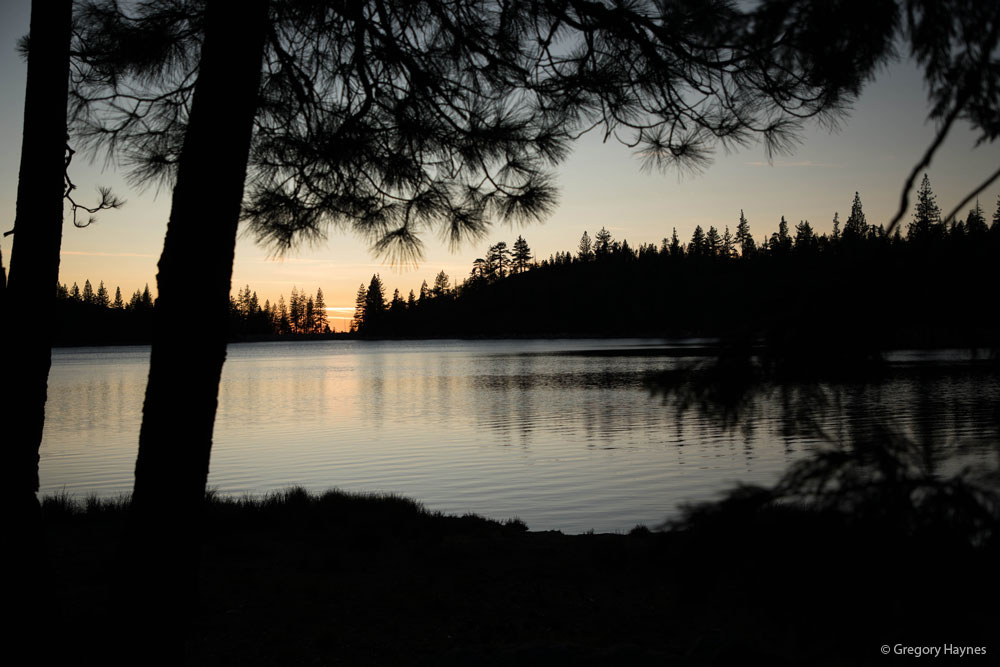
A view from the campsite looking westward across the lake
Much later, in the year 2011 when beginning to work on the Alan-Chadwick.org website project, I began making lists of all the apprentices that I could think of, intending to track down as many as possible to get their impressions of Alan and his gardens. Will David was on that list, but I had no idea how to get in contact with him. But in late July of this year (2017) at the fifty-year reunion/celebration of the foundation of the Garden Project at UCSC, I was astonished and very glad to discover that he was in attendance. At the dinner party that was held on Thursday, July 27 (the anniversary of Chadwick's birthday) Will recounted some of the memorable episodes of his remarkable sojourn with Chadwick at Blue Lake.

A crescent moon hangs demurely over the late evening sky
A week or so later, after that reunion dinner, Peter Jorris wrote a short piece describing the jovial spirit of that special evening at the garden chalet for publication on this website. In that article, he mentions that memories of the camping trip to Blue Lake were shared by some of the assembled old timers. Not long afterwards, another former Chadwick apprentice, who was not present at the event, read Peter's account and contacted us asking if we knew precisely where Blue Lake was located. None of us did, but after several communications with Will David, who fortunately remembered the area quite well, we successfully located Blue Lake on a map of the Tahoe National Forrest, lying somewhat easterly from Nevada City, California.

One thing led to another, and the suggestion was made to the effect that it might be interesting to go up and visit Blue Lake, inviting whoever might want to go along as a kind of tribute to Alan Chadwick. But the realists among us quickly pointed out how late in the year it had now become (late-September already) and that, realistically, an excursion of that sort would have to wait until next year. Certainly planning an activity like that would take time, as would notifying people who might possibly be interested, and with all the other necessary preparations, it would literally take several months lead time. And since the Sierra Nevada can be treacherous in the fall, what with sudden inclement weather that can strand the unsuspecting backpacker in areas inaccessible to rescue, it was obvious that nothing could be done this year, and to attempt any such thing would be rather foolhardy and potentially dangerous to boot.

The glow of the sun lingers on into the early evening at Blue Lake
BUT...
The fall in the Sierras, if you are lucky enough to escape blizzards, torrential rains, and deadly mud slides, can be beautiful. Anyone who considers going up at that time is strongly advised to get the latest weather forecast to avoid the predictable storms at least, though they sometimes materialize without notice, and can be sudden and devastating. But danger is no impediment to the intrepid staff at Alan-Chadwick.org. Without even checking the weather report, we dug out dusty old backpacks, sleeping bags, tent, water bottles, camp stove, warm jacket, matches, compass, food bags with twine to hang them out of reach of bears, water purifier, Sierra cup, and all the other essentials, threw some various dried fruits and nuts, oatmeal, quinoa, etc into some plastic bags and started driving eastward into the mountains.
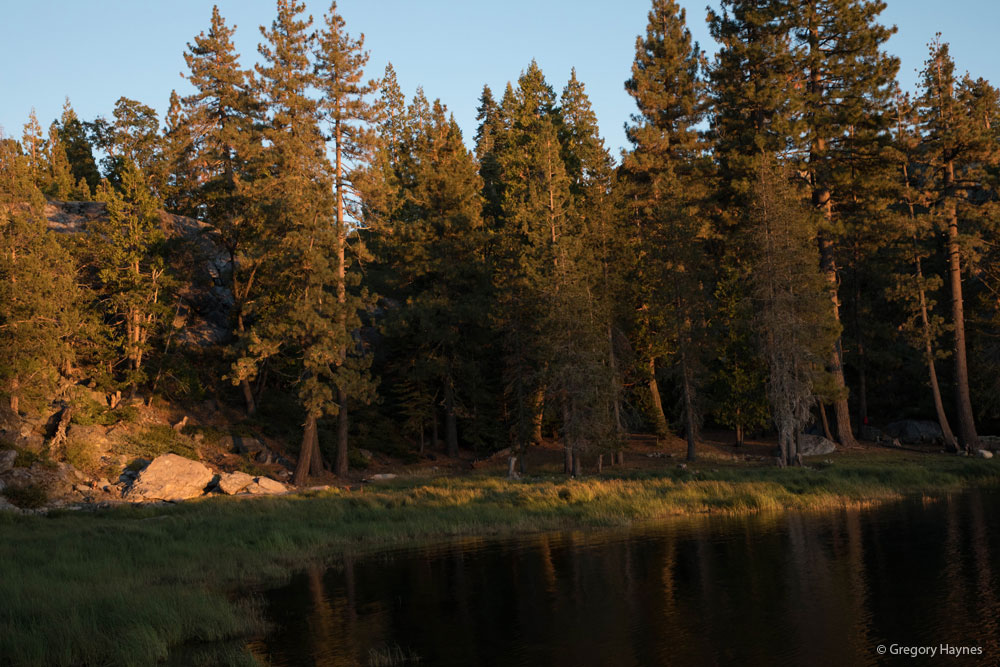
The forest at the northeastern part of the lake descends right down to the water's edge
As luck would have it, or perhaps because the spirit of Alan Chadwick graciously intervened from beyond the threshold, we readily found Blue Lake and spent two beautiful days there camped by the water side. The accompanying photographs help to show what this legendary spot looks like for those who might also be interested in making a similar pilgrimage someday.

Another view of Blue Lake and Zion Hill

A prolific stand of alpine grasses along the shoreline

Because Blue Lake is located at the end of an extremely rough road, very few people venture in. The best camping area is located on the northern shore, but getting there requires backpacking a mile or two from the trail head.
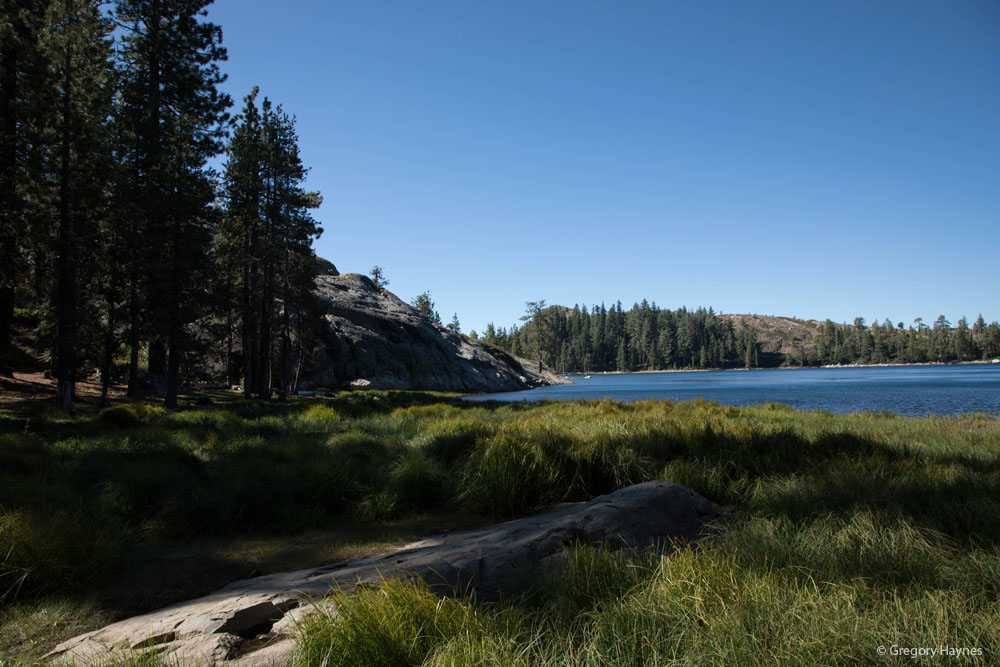
Looking south across the lake to Zion Hill
A Final Word of Warning:
The road from Rucker Lake to Blue Lake is passable only by high-clearance trucks or four wheel drive vehicles, as it is extremely rough and rocky. The best camping area lies a mile or two from the trail head, around on the north side of the lake.
See here for a brief account of one apprentice's experience at Blue Lake with Alan Chadiwck.
Contributed September, 2017.
By Greg Haynes
Return to the top of this page
